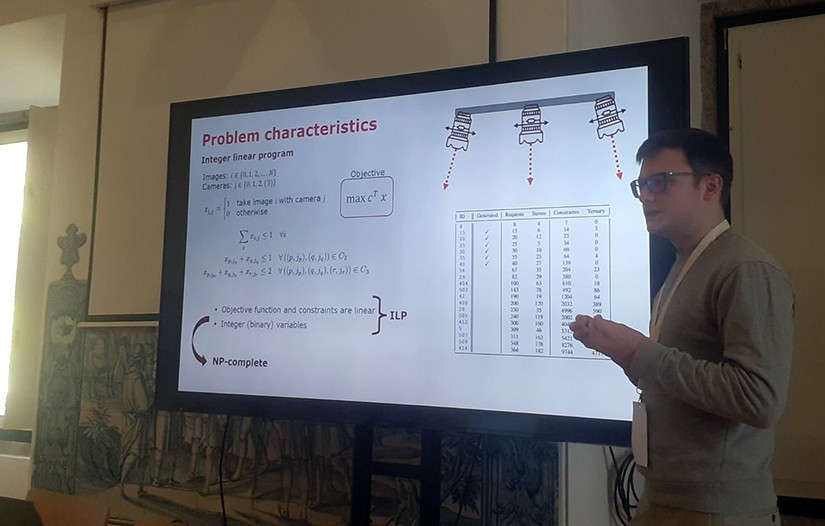GMV showcases advances in using quantum computing to optimize Earth observation satellite imaging

On 23 November, GMV attended the 24th International Conference on Intelligent Data Engineering and Automated Learning (IDEAL) at the University of Évora, where it highlighted its recent progress in harnessing the power of quantum computing to optimize image acquisition from Earth observation satellites.
GMV data scientist Anton Makarov presented the conference paper “Optimization of Image Acquisition for Earth Observation Satellites via Quantum Computing,” describing the results of the research carried out within the CUCO project. A pioneer in quantum computing both nationally and in the business world, the project aims to advance the state of the art in quantum algorithms and translate this knowledge into various proofs of concept in strategic sectors such as energy, finance, space, defense, and logistics.
In the space sector, the challenge of selecting the optimal subset of images for satellite acquisition is extraordinarily complex due to the combinatorial explosion of the problem. Makarov’s presentation focused on how quantum computing can deliver more efficient solutions to this problem, which would not only provide a significant competitive advantage, but also pave the way for tackling more complex challenges, such as those associated with multi-satellite constellations.
The CUCO project is supported by the Centre for the Development of Industrial Technology (CDTI) and the Spanish Ministry of Science and Innovation under the Recovery, Transformation and Resilience Plan. It is the first major quantum computing project at the national and business level. Using an interdisciplinary approach, it aims to drive advances in quantum algorithms and their application in practical scenarios, marking a significant milestone in the convergence of quantum technology and real-world applications.